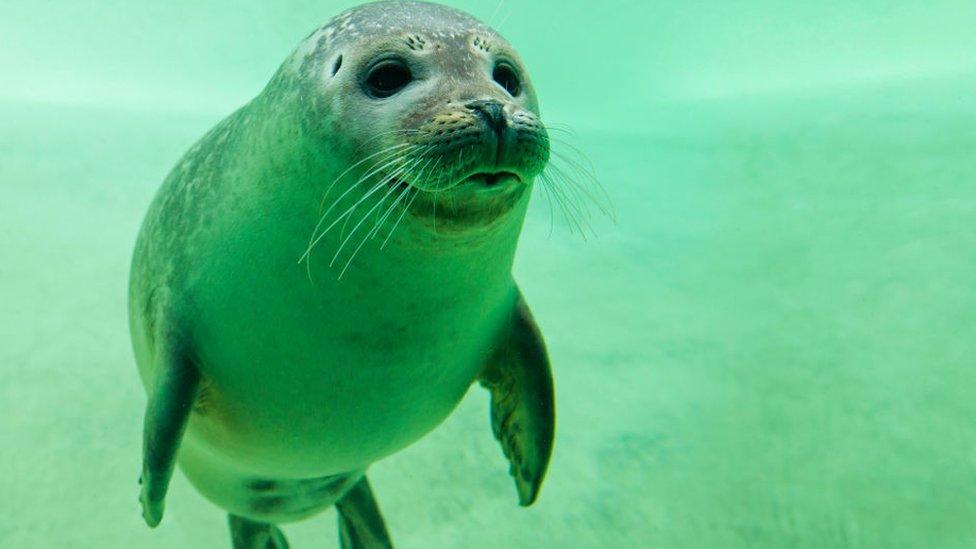Baby seal experiment shows they can understand rhythm
- Published
- comments

If you've ever found yourself tapping along to a song then you're feeling the rhythm of the tune. For a long time scientists thought humans were, one of very few, animals who could sense this rhythm, but not any more.
Researchers have been studying the effects of music on baby seals, and have discovered these tiny pups have a sense of rhythm.
Harbour seals are already known to be smart mammals and known to be capable of vocal learning, like speech commands and noises.
So this experiment wanted to discover if seals would respond to musical rhythms, like humans can.
The study showed that seals can understand rhythm - without any training.
Why is rhythm important?
Rhythm in the daily lives of humans is important for learning speech and creating music.
Biologists think that our ability to connect speech with music are linked, but no one is really sure if that capability extends into other mammals.
It is known that songbirds can learn new vocalizations and seem to have a sense of rhythm but "our closest relatives, non-human primates (like monkeys and apes) need to be trained to respond to rhythm," explains first author of the study, Laura Verga.
"And even when trained, primates show very different rhythmic capacities to ours."

What the study showed...
The team created seal sounds in differing rhythmic sequences differing in tempo (fast and slow), length (long and short) and regularity (so patterns of music that were either a regular beat, or something more random), to see how the seals would respond.
20 infant seals due to be released back into the wild from a rehabilitation centre were then tested to see how they would react to the different sequences.
Using a method to study human babies, the team recorded how often the baby seals would turn their heads to look at where the sound was coming from - which was positioned behind them.
Previous studies have shown that when an animal - or a human baby - hears a sound, they are likely to look at where this noise is coming from. If the reaction to that sound is interesting to them, they may be engaged with it for longer.
So if there are sequences a seal pup prefers, it might look longer.
"Significant advance"
What the study found is that the baby seals - without any training or rewards for their responses - looked more often when these rhythmic sequences were longer, faster, or were of a rhythmically regular pattern.
They seemed to show little to no interest in shorter, slower or irregular ones.
Verga, says "Similarly to human babies, the rhythm perception we find in seals arises early in life, is robust, and requires neither training nor reinforcement."
- Published31 October 2021

- Published26 October 2020

